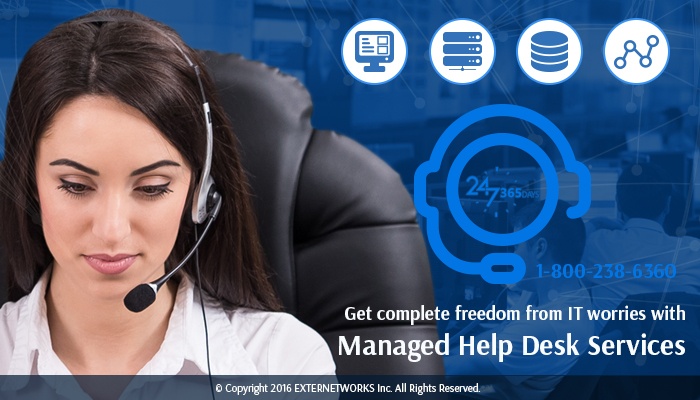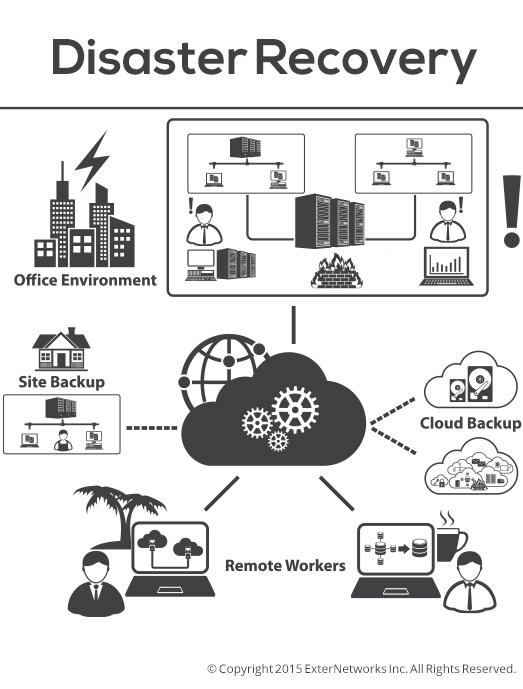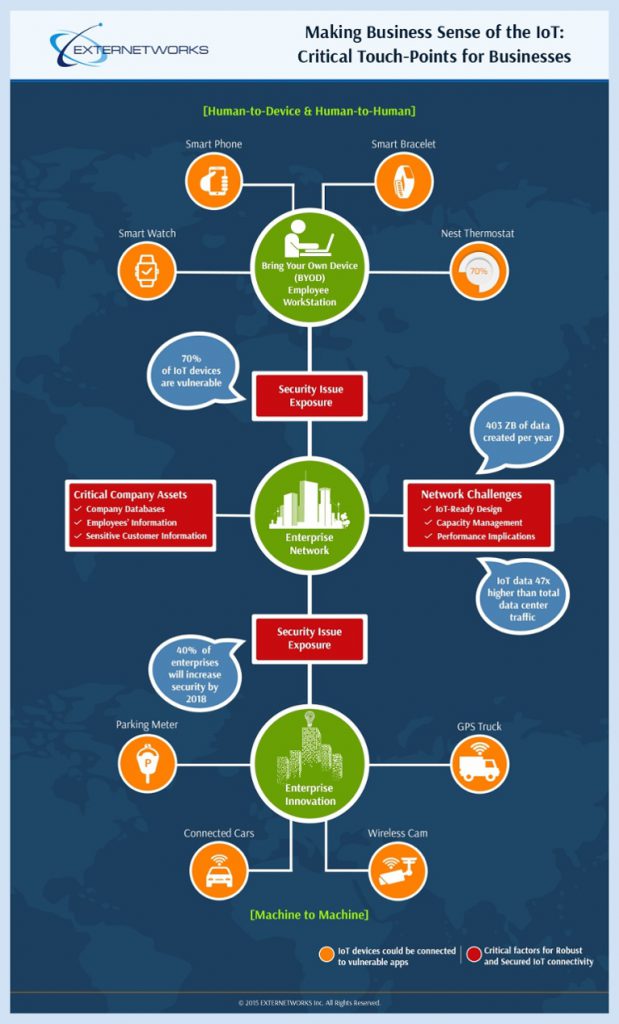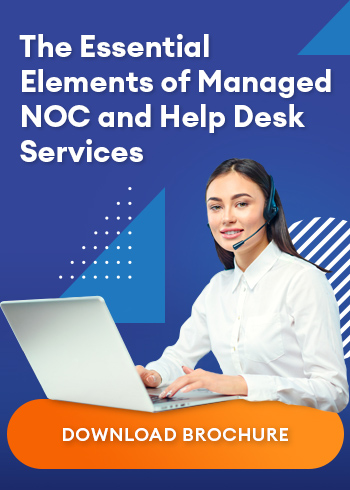4 Changes to Your IT Policy Critical for SaaS Cloud Adoption | ExterNetworks
Migrating to the cloud opens up a gamut of benefits, but the transition can be a tad challenging. To ensure the transition is both smooth and successful, you need to make certain changes to your IT Policy to account for both scalability and security issues, while balancing your budget with the size of your business. This article gives you certain quick tips that will help you in easy cloud adoption.

SaaS Cloud adoption bestows you with cost-savings, enhanced productivity, and better overall business operations.
Moving to the cloud definitely brings with it a wide-range of benefits, but getting there successfully can be a bit difficult. From IT department overloads to security issues, there are more than a few changes that need to be incorporated within your existing IT policies to ensure the switch is successful.
As your company moves to the cloud, you will probably be wary of scalability and security issues. But fortunately, the more you learn about SaaS and cloud-based services, you will see that these features can be used to your advantage. Here is a quick look at the changes your enterprise will need to make as it moves to SaaS and cloud-based services.
Please do keep in mind that the size of your business, its budget constraints, and the industry it is operating in will largely affect the exact steps that it needs to take to incorporate effective IT policies with new cloud-based functions. However, generally, most businesses can still use the following advice to ensure its cloud-based practices are carried out to their utmost capacity.
1. Be Aware of Cloud Software Scalability
One of the most advantageous reasons to integrate cloud computing capabilities is that it allows for enhanced scalability to take place. Your enterprise can upscale or downscale according to your IT department requirements, but it’s important to keep in mind that when scalability is not understood, this presents a major problem.
To ensure all scalability issues are being properly addressed, your enterprise must use a server load balancer, which enables you to distribute client requests – load them – via one or more servers so that all tasks can be handled simultaneously. This, of course, will prove beneficial when integrating existing operations with those that accommodate already-existing software practices.
Making sure that scalability issues are being appropriately resolved means you don’t need to collect too much detailed data when a potential customer enters your environment. Instead, you will want to collect data when it makes itself present as a valuable resource — this will enhance your profit levels because you reduce money invested into time-consuming data collection methods. Instead, you will be collecting data when it’s presented to you free of charge, such as when customers make a purchase and you collect email addresses, phone numbers and payment information.
2. Set Up a Streamlined Process for Accessing All Applications Via the Cloud
If your employees don’t know how to access the cloud operations that you are offering them, then there are no advantages to be gained. You need to partner with cloud-based services that offer 24×7 customer support, ensuring that all your employees know how to use the services to the utmost advantage of your company.
When you choose a cloud-based service provider, you will need to set up a time for training. From your HR department to your sales employees, each division will need to be taught the ins-and-outs of working with any type of SaaS. A streamlined process of educating your employees will result in overall enhanced productivity, which leads to boosted profit levels.
This training needs to ensure that your employees know how to use SaaS in a way that promotes:
- That all data is created equal. This means that your servers will be used to ensure that data-space is utilized in the most efficient way possible; your most-potential customer data will be used to deliver targeted ads to them.
- Enhanced disaster recovery. No matter what time of the day or night the data disaster takes place, your employees will know the steps to take. This includes the various ways to reduce downtime and minimize the amount of lost data.
3. Conduct Frequent Cloud Satisfaction Surveys
To put it bluntly, your employees are at the heart of your operations. If they are not satisfied, neither will your customers be. And it’s because of this that you need to conduct various cloud-adoption satisfaction surveys. As your employees transition into new cloud operations, you’ll need to make sure that they are comfortable with performing their tasks according to cloud-based functions.
If you are using cloud-based programs in the right way, then yes, they will enjoy the many benefits that are to be gained. But if you aren’t, your staff members will readily testify that their productivity potentials are being limited. And in this type of situation, you will want to know that you need to realign your cloud adoption processes with ones that are more advantageous to your company.
Important questions that you’ll want your employees to answer within the cloud adoption surveys are:
- Does cloud adoption feel as if it is enhancing overall business processes?
- What is it about cloud adoption that could be simplified?
- Do you think cloud adoption is the right move to make?
- What part of [specific] SaaS provider do you think could be improved?
- Do you think you could fulfill SaaS functions better?
- How has cloud adoption made a difference to the top-line and bottom-line?
- How has cloud adoption made a difference in building/maintaining relationships with new/existing customers?
4. Realign Your Backup Strategies
When your backup strategies don’t properly align with your overall business functions, this means you are risking the loss of data that could possibly be vital to your overall business operations. To make sure your backup processes are accommodating your new and existing cloud processes, you must assess them.
This means your Recovery Time Objective – the amount of time you must recover from IT downtime to ensure business continuity can be maintained without harsh consequences — must be compatible with your SaaS’s data backup and recovery processes. You must predictively evaluate disaster processes, making sure that you are prepared.
If you assess your data backup processes and find that they don’t meet your enterprise’s needs, then this is a sure sign that you need to outsource the involved processes. There are more than a few service providers that provide data backup services that can be customized to your company’s needs.
The Takeaway
By implementing certain changes, your cloud adoption process can be significantly simplified. More importantly, it can enhance your organization’s security. Cloud adoption practices can lead to a variety of advantages, including cost-savings, enhanced productivity, and better overall business operations. If you are considering implementing cloud-based programs, it is highly advised that you remember the above mentioned tips and advice.
ExterNetworks’ Value Proposition
Managed Cloud Services is gaining steam in the cloud arena, as organizations understand the need to transition from traditional hosting to a cloud-based hosting. Managed cloud is cost-effective for businesses who don’t want to dwell on the hassles of ‘self-service’ cloud offering.
Businesses are continuously looking to increase productivity, which require them to free their IT resources and focus on strategic initiatives and cloud-driven innovations. With ExterNetworks Cloud ManagementServices – an integrated, cloud agnostic managed solution – we cover the breadth and depth of cloud lifecycle management to help you find the right answers for your cloud needs.









